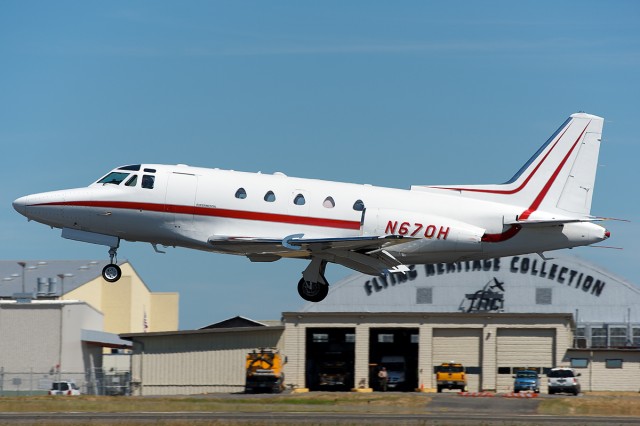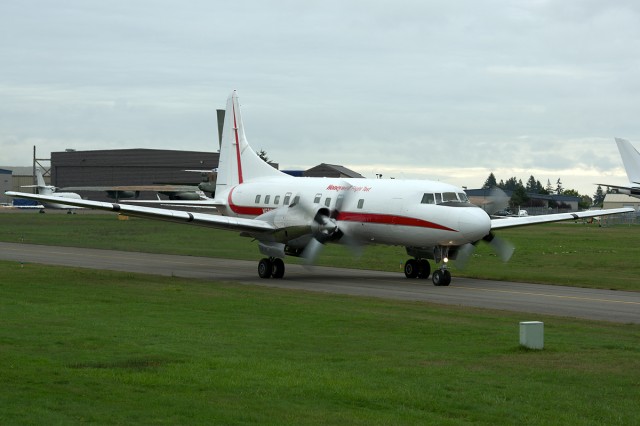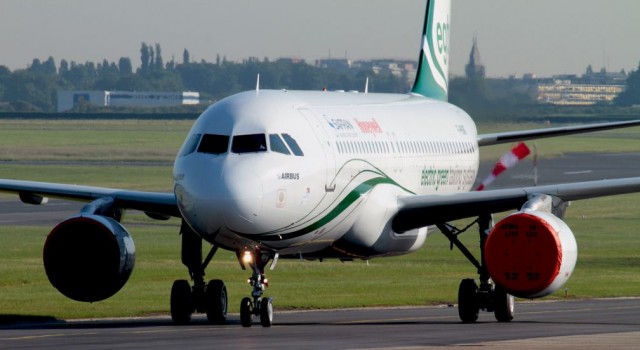
N670H was the first aircraft in the world to be certified with TCAS. Photo by Bernie Leighton | AirlineReporter.com
Recently I spent a day with Honeywell Aerospace and it had clearly worked its way into my brain at a deeper-than-expected level.
Before I found the opportunity to go over my notes and write a follow-up article about my time with the Honeywell Crash Test Dummies up at Paine Field, I found myself on board an American Airlines Boeing 737. My first thought, after it was clear that tower had given us a “taxi into position and hold” command for Runway 34R at SEA was, “I sure hope this aircraft has RAAS.”
Runway Awareness and Advisory System is a Honeywell Aerospace product that allows pilots to enhance their situational awareness by providing audible and visual cues about the aircraft’s location relative to its destined runway. Once the aircraft arrives on the runway, it is capable of reminding flight crew that they are still on the runway after one minute and thirty seconds. This time was decided on by Honeywell’s research team. After ninety seconds on the runway, research shows that the safe course of action is to make a radio call to the tower reminding them of your position and intent. That technology alone saves lives and prevents damage, but if you think Honeywell stopped there, you would be wrong.

N580HW, a 61-year-old Convair 580 – Photo: Bernie Leighton | AirlineReporter.com
Those of us in the Seattle AvGeek scene are all too familiar with Honeywell Aerospace Flight Test’s Convair 580 (reg N580HW) based at Paine Field (PAE) [where Boeing makes their 747, 767, 777 (for now) & most 787 aircraft]. The aircraft is serial number 2, it was built in 1952. It is not every day that you have the opportunity to see a 61-year-old aircraft in operational service, let alone fly on one. This was my lucky day.
Before making the drive to the “Honeywell Museum of Flight” at Paine Field, I was at Honeywell’s Redmond laboratory to partake in a demonstration of Honeywell’s advanced Enhanced Ground Proximity Warning System (EGPWS), Traffic Collision Avoidance System (TCAS), and landing monitoring research.
At the time, I was not sure if I would be getting a flight on the Convair or their Sabreliner (N670H). Shortly after my arrival, I was told that we would all be hopping aboard N580HW — I was thrilled, but also at the same time kind of jealous of the Sabre crew!

No, this A320 isn’t parked. It’s taxiing without the engines running. Check out the video after the break.
Photo: Benoà®t Vallet/Safran
Airlines are doing everything they can to reduce their fuel costs. You may have taken an airline flight recently where the crew taxied to or from the runway on one engine. Or you’ve noticed that the Auxiliary Power Unit (APU) isn’t running when a plane is at the gate. Sometimes, if possible, instead of running the APU the plane can be plugged into “ground power,” getting it’s juice through a big extension cord from the terminal.
Airlines are also playing with new approach procedures that smooth out the descent and path to the runway, allowing crews to bring the power back to near-idle thrust and pretty well glide most of the way to the threshold and saving on fuel. The goal is to try and do anything to save fuel while keeping passengers safe.
Honeywell and Paris-based Safran Groupe have come up with some nifty new technology that could save airlines hundreds of thousands of dollars a year in fuel costs for each aircraft. It’s called the “Electric Green Taxi System” or EGTS, and it was recently demo’d at the Paris Air Show.


